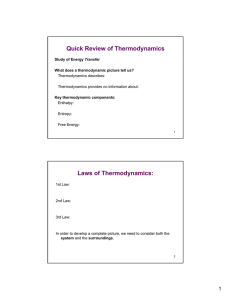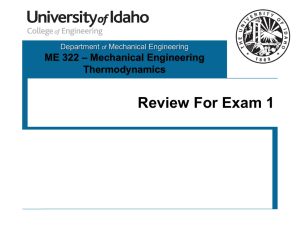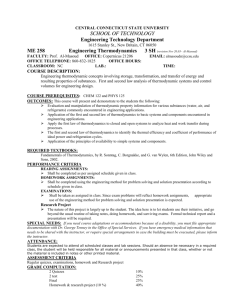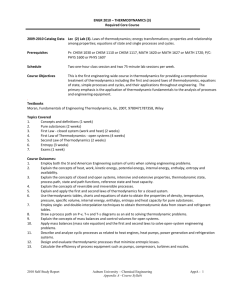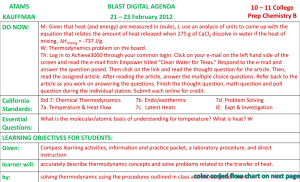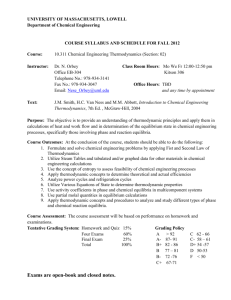Tutorial
advertisement
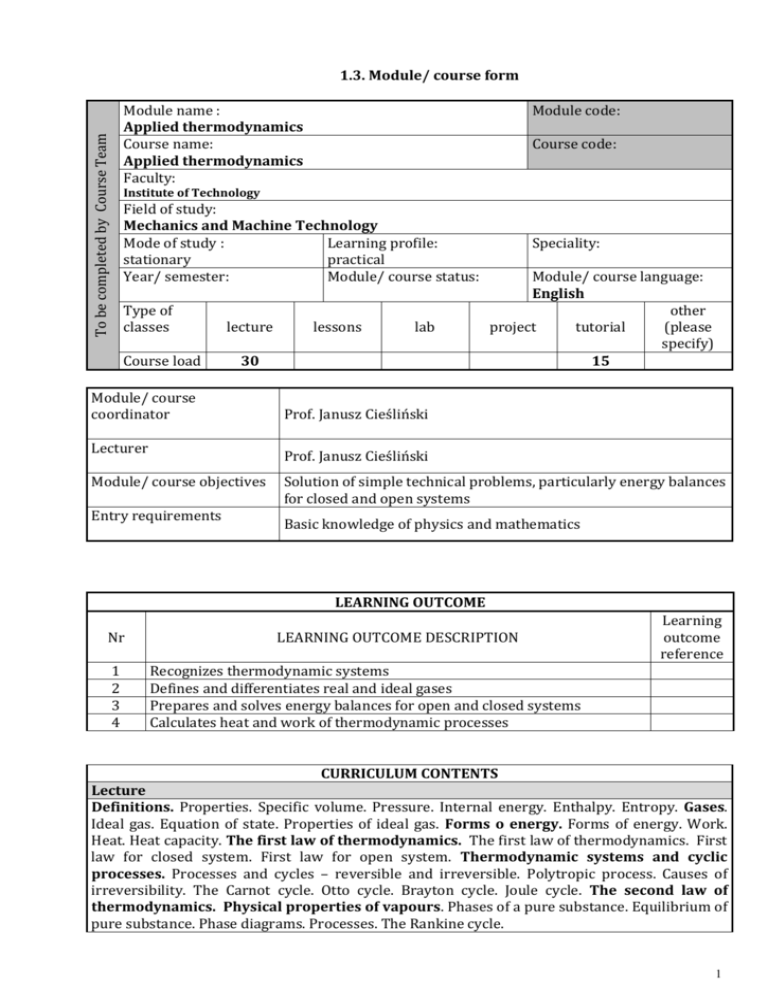
1.3. Module/ course form To be completed by Course Team Module name : Applied thermodynamics Course name: Applied thermodynamics Faculty: Module code: Course code: Institute of Technology Field of study: Mechanics and Machine Technology Mode of study : Learning profile: stationary practical Year/ semester: Module/ course status: Type of classes Course load lecture lessons lab 30 Module/ course coordinator Lecturer Speciality: Module/ course language: English other project tutorial (please specify) 15 Prof. Janusz Cieśliński Prof. Janusz Cieśliński Module/ course objectives Entry requirements Solution of simple technical problems, particularly energy balances for closed and open systems Basic knowledge of physics and mathematics LEARNING OUTCOME Nr 1 2 3 4 LEARNING OUTCOME DESCRIPTION Learning outcome reference Recognizes thermodynamic systems Defines and differentiates real and ideal gases Prepares and solves energy balances for open and closed systems Calculates heat and work of thermodynamic processes CURRICULUM CONTENTS Lecture Definitions. Properties. Specific volume. Pressure. Internal energy. Enthalpy. Entropy. Gases. Ideal gas. Equation of state. Properties of ideal gas. Forms o energy. Forms of energy. Work. Heat. Heat capacity. The first law of thermodynamics. The first law of thermodynamics. First law for closed system. First law for open system. Thermodynamic systems and cyclic processes. Processes and cycles – reversible and irreversible. Polytropic process. Causes of irreversibility. The Carnot cycle. Otto cycle. Brayton cycle. Joule cycle. The second law of thermodynamics. Physical properties of vapours. Phases of a pure substance. Equilibrium of pure substance. Phase diagrams. Processes. The Rankine cycle. 1 Tutorial Applications of equation of state. Internal energy and enthalpy of ideal and semiideal gasses. Specific heat of ideal and semiideal gasses. Energy balance for closed and open systems. Heat and work of characteristic thermodynamic processes. Efficiency of selected thermodynamic cycles. Properties of wet steam. Heat of isobaric process. Work of the reversible adiabatic process 1. Basic literature 2. Look D.C., Sauer H.J.: Engineering thermodynamics, SI edition Van Strand Reinhold Co. Ltd, 1988 Liley P.E: Mechanical engineering. Thermodynamics. McGraw-Hill Publishing Company, 1988 Additional literature Multimedia presentation Teaching methods Learning outcome number Assessment method Exam Form and terms of an exam 1,2,3,4, Lecture and tutorial – defence of homework STUDENT WORKLOAD Number of hours Participation in lectures Independent study of lecture topics Participation in tutorials, labs, projects and seminars Independent preparation for tutorials* Preparation of projects/essays/etc. * Preparation/ independent study for exams Participation during consultation hours Other TOTAL student workload in hours Number of ECTS credit per course unit 30 25 15 16 25 2 71 5 Number of ECTS credit associated with practical classes 1,3 Number of ECTS for classes that require direct participation of professors 2 2




